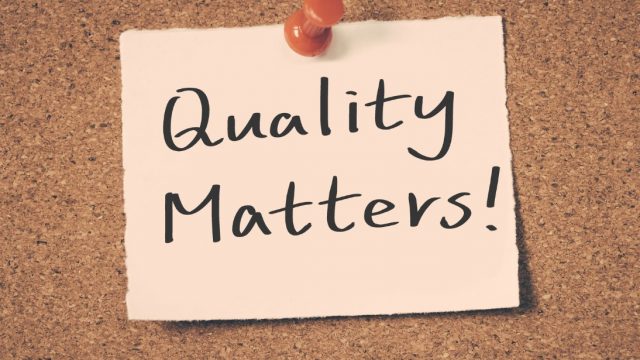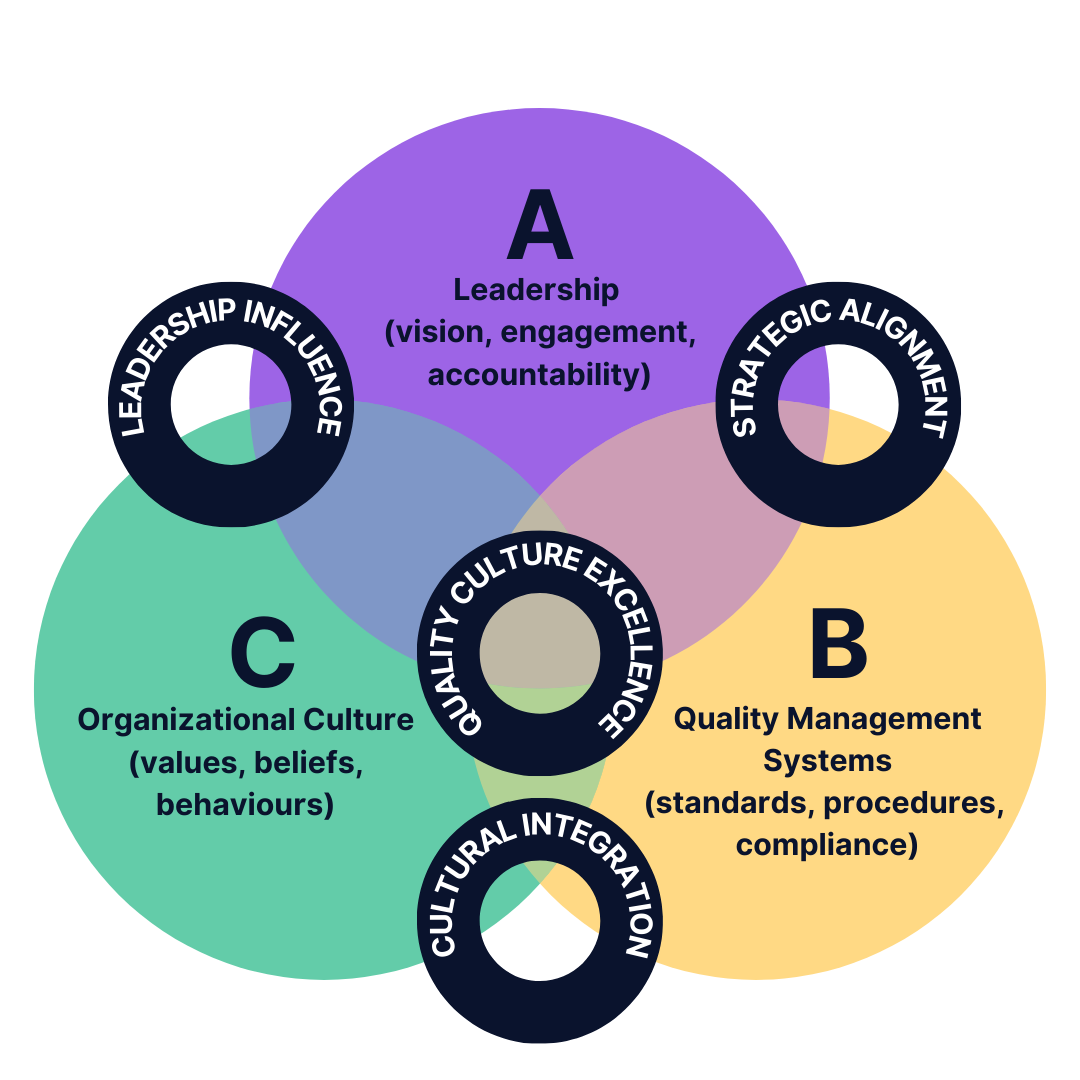By Jackie Stapleton
In a recent small poll I conducted on LinkedIn I asked the question Where does the organizational culture intersect with a quality management system? Where do you see the intersection in ISO 9001? The most common response was that the intersection in ISO 9001 stood squarely with Leadership.
And I didn’t have to get far in reviewing the Leadership clause in ISO 9001 to find exactly why. And this isn’t something I’m just making up, it’s right here in clause 5 Leadership, the first point where it states that Top management shall demonstrate leadership and commitment with respect to the quality management system by taking accountability for the effectiveness of the quality management system. There it is, right there! Taking accountability for the effectiveness of the quality management system! Yes, I thought it deserved for me to say it twice it was that good. And to add to this there is also a requirement to engage, direct and support people to contribute to the effectiveness of the quality management system.
Engagement for quality culture transformation:
As a Quality Culture Leadership Expert, I often encounter organizations where the dedication to quality standards like ISO 9001 is overshadowed by cultural challenges. My story with Alex, a Quality Leader at a mid-sized communications firm, is a testament to how impactful leadership and cultural transformation can be.
Alex reached out to me after recognizing that their company’s approach to quality was more procedural than cultural. They had the systems in place, but the spirit of quality wasn’t flowing through the organization. We worked together to not just meet ISO 9001 standards, but to make quality a core part of their organizational identity.
Our Collaborative Assessment:
Initially, I worked closely with Alex to assess their existing quality management system. This involved interviews, surveys, and observations to understand the specifics of their company culture and the barriers they faced in enhancing their quality values.
Strategic Cultural Intervention:
Drawing on my experience, I helped Alex create a multifaceted strategy that would engage every employee, from customer service to the executive level, in the quality conversation:
- Leadership Engagement: I conducted workshops for the senior management team, emphasizing the role of leadership in driving a quality-focused culture.
- Quality as a Shared Vision: Alex and I co-created a campaign that positioned quality as a shared goal, pivotal to everyone’s success. This included sharing compelling narratives from other organizations that had successfully integrated quality into their daily operations.
- Tailored Training Programs: Recognizing that one size doesn’t fit all, I helped design and deliver customized training programs that addressed the company’s specific challenges and opportunities in quality management.
- Dynamic Communication Channels: Based on best practices, I introduced new ways to keep quality in the daily dialogue, such as a ‘quality moment’ at the start of every meeting and a leaderboard to celebrate quality wins.
- Advocacy for Resources: I supported Alex in advocating for the resources needed to sustain quality initiatives, showing the leadership team the tangible benefits of investing in quality.
Shifting the Culture:
Our combined efforts led to what I call a ‘Quality Revolution.’ The transformation didn’t happen overnight, but as we engaged employees at all levels at a considered and gradual timeframe, the culture began to shift. The company started seeing quality not just as a department or a certification but as a collective responsibility.
Measurable Success:
The changes were soon reflected in key metrics: nonconformance rates dropped, customer satisfaction soared, and employee engagement metrics hit an all-time high. Perhaps most telling was the renewed sense of pride employees took in their work and the recognition the company received from enterprise clients with renewal of contracts.
Continuing the Journey:
My collaboration with Alex became a case study in successful cultural change. It’s a story I often share to illustrate how a partnership between an internal advocate like Alex and an external change agent can create a lasting impact on quality culture.
The correlation between the effectiveness of a company’s strategy and its cultural alignment is widely recognized. When these two elements are out of sync, it typically indicates a need to revisit and revise the organizational culture.
In an insightful piece from the Harvard Business Review, titled Organizational Change | Create Stories That Change Your Company’s Culture, research drawn from interviews with a diverse group of over 60 global business leaders revealed varied approaches to cultural transformation. Some leaders hadn’t considered altering their organization’s cultural fabric; some had attempted and not succeeded, while a select few had achieved notable success.
Interestingly, the successful cases didn’t commence with drafting new value lists or comprehensive analyses of how existing cultural practices affected strategy rollout, nor did they start with an overhaul of existing policies and procedures. What set the successful leaders apart was their use of storytelling. They deployed narratives that, although not always reflecting the prevailing cultural norms, supported a culture that was better aligned with strategic objectives.
These stories included examples of employees delivering exceptional service that reinforced customer-focused strategies, celebrated instances of innovation and determination that spurred creative strategies and focused on detailed process enhancements to underpin strategies aimed at delivering high quality and cost efficiency.
The Quality Culture Model
A. Leadership Circle:
- Vision: The ability of the leadership to define and communicate a clear direction and purpose for quality within the organization.
- Engagement: The active involvement of leaders in fostering a culture that values and strives for quality.
- Accountability: The responsibility taken by leaders for the overall quality outcomes, creating a culture where quality is seen as a collective responsibility.
B. Quality Management Systems Circle:
- ISO 9001 Standards: The structured process and criteria set by ISO 9001 to ensure quality in all aspects of an organization’s operations.
- Procedures: The documented ways of performing tasks and processes to maintain quality consistency.
- Compliance: Adherence to the established procedures and standards, ensuring that the organization meets the required quality benchmarks.
C. Organizational Culture Circle:
- Values: The shared beliefs and principles that drive behavior within the organization.
- Beliefs: The underlying assumptions and convictions that employees hold about the company’s purpose and direction.
- Behaviors: The day-to-day actions and interactions of employees that reflect the organization’s values and beliefs.
Intersections:
-
Cultural Integration (Organizational Culture & Quality Management Systems):
This is where the ingrained cultural elements of the organization are aligned with the quality management systems. It involves integrating the quality mindset into the core cultural fabric of the company, ensuring that quality is not just a system, but a value lived by all.
-
Strategic Alignment (Quality Management Systems & Leadership):
Leadership ensures that the quality management systems are not only implemented but are also strategically aligned with the organizational goals. This involves the leadership championing quality not just in policy but in strategic planning and decision-making.
-
Leadership Influence (Leadership & Organizational Culture):
The influence of leadership on the organizational culture can set the tone for quality. Leaders shape the culture through their actions, decisions, and the priorities they communicate. They are instrumental in fostering a culture that values continual improvement and quality excellence.
-
Quality Culture Excellence (Central intersection):
The nexus where Organizational Culture, Quality Management Systems, and Leadership converge is where Quality Culture Excellence is achieved. This central point embodies the harmonious blend of a quality-centric organizational culture, robust quality management processes that are lived and breathed daily, and influential leadership that guides and maintains the quality vision. This sweet spot represents the ideal state of a quality culture where each component reinforces the others, leading to sustainable quality improvement and organizational success.
The foundation level where organizations meet the set guidelines and regulations.
This article first appeared on ATOL‘s Lead The Standard newsletter and is published here with permission.


